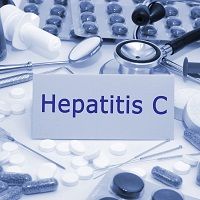Article
Combination Treatment with Daclatasvir Produces Good Results in Patients with Genotype 4 Hepatitis C
Author(s):
In treatment-naive patients with genotype 4 HCV, treatment with daclatasvir in combination with peginterferon alfa/ribavirin resulted in higher SVR12 rates than treatment with peginterferon alfa/ribavirin alone.

With limited and unsatisfactory treatment options currently available for patients with genotype 4 hepatitis C virus (HCV), the results from the COMMAND-4 study presented at IDWeek 2014 offer some promise for these hard-to-treat patients.
In the study, 82 patients with genotype 4 HCV were treated with 60 mg once daily of the NS5A inhibitor daclatasvir in combination with peginterferon alfa 180 µg once weekly and weight-based ribavirin (1000-1200 mg/day) twice daily. In the study’s other arm, 42 patients received placebo plus peginterferon alfa and ribavirin.
Researchers evaluated the safety and efficacy of this combination in treatment-naïve patients with genotype 4 HCV, including patients with cirrhosis. The primary endpoint of the study was sustained virologic response at 12 weeks (SVR12).
Patients treated with the daclatasvir combination who had undetectable HCV RNA at weeks 4 and 12 (extended rapid virologic response, or eRVR) received 24 weeks of treatment with the daclatasvir/peginterferon alfa/ribavirin combination. Patients who did not have an eRVR received an additional 24 weeks of treatment with peginterferon alfa/ribavirin. All patients in the placebo group received 48 weeks of treatment with peginterferon alfa/ribavirin.
The median age of patients in the daclatasvir group was 48.5 years, and the median age in the placebo group was 50. Seventy-three percent of patients in the daclatasvir group were white, 22% were black, and 5% were identified as “other.” In the placebo group, 86% of patients were white, with 12% black and 2% other. The authors noted that 75% of study participants were IL28B non-CC and 11% had cirrhosis. There was a “diverse representation of GT 4 subtypes, with GT 4A, 4C, or 4D being the most common (57%).”
The authors reported that SVR12 rates documented on or after post-treatment Week12 were “significantly higher” in the group treated with the daclatasvir/peginterferon alfa/ribavirin combination than in the group that received placebo plus peginterferon alfa/ribavirin (82% vs. 43%, respectively). They also noted that a higher proportion of the daclatasvir group completed treatment compared to the placebo group (72% vs. 61%).
Analysis of secondary efficacy endpoints showed that 85% of the daclatasvir group achieved RVR at Week 4, compared to 12% of the placebo group. Seventy-nine percent of the daclatasvir group achieved eRVR at weeks 4 and 12, making them eligible for the shortened 24-week treatment regimen, whereas only 12% of the placebo group achieved eRVR.
Among patients in the daclatasvir group, the authors reported “there were no noticeable effects on SVR12 rates according to baseline factors (IL28B genotype, age, race, gender, cirrhosis status, baseline viral load) known to impact response” to peginterferon alfa/ribavirin.
In terms of treatment safety and tolerability, there were no deaths in either treatment group. The daclatasvir group reported a higher rate of severe adverse events than the placebo group (9.8% vs. 4.8%), but there was a higher rate of adverse events leading to discontinuation of treatment in the placebo group than in the daclatasvir group (7.1% vs. 4.9%). Reasons for discontinuation in the daclatasvir group included neutropenia, uveitis, cerebrovascular accident, and diabetes mellitus. Reasons for discontinuation in the placebo group were Grave's disease, abdominal pain, and hypersensitivity. The authors concluded that there were no clinically relevant differences in the safety profile between the two groups.
Based on these results, the authors concluded that in treatment-naive patients with genotype 4 HCV, treatment with daclatasvir in combination with peginterferon alfa/ribavirin resulted in higher SVR12 rates than treatment with peginterferon alfa/ribavirin alone, with the majority of daclatasvir recipients requiring only 24 weeks of treatment. “These data support [daclatasvir]-based regimens for [genotype 4] infection, including all-oral combinations with other direct-acting antivirals.”





